Ceasefire: An Analysis by :
Analysis of UN Security Council Resolution 1701 to end the
war and an examination of its significance (primary evaluation)
Overview
1. On
adopted Resolution 1701, which calls for the end of the fighting
between Israel and Hezbollah, nicknamed “the second Lebanon
War” in Israel (For the full text of the resolution, see Appendix B).
A ceasefire began on Monday, August 14, at
government of Israel, which met on the morning of August 13,
unanimously approved the decision (with the abstention of
Shaul
2. The Lebanese government unanimously approved the Security
Council resolution on August 12, despite the reservations of Hezbollah
supporters. An additional meeting of the Lebanese government was
held during the afternoon of August 13 to define the practical
aspects of implementing the resolution, following the morning
Israeli government meeting. The meeting was postponed because
of Hezbollah objections.
3. On August 12, Hezbollah leader Hassan Nasrallah, in a carefully
worded speech, said that he would implement the decision and
cease Hezbollah attacks if a specific date for it were determined,
and would agree to the deployment of Lebanese army troops
reinforced by UNIFIL forces. On the other hand, he claimed that
as long as Israeli forces were in Lebanon, Hezbollah would continue
fighting, because “as long as Israeli soldiers occupy our land, it is
our natural right to oppose them” (Al-Manar TV, August 12).
4. On the ground, a few hours before the Security Council adopted
the resolution, Israeli Prime Minister ordered the IDF to broaden
the scope of its land activities, with an emphasis on the territory
south of the
operational capabilities significantly, to damage the organization’s
short-range rocket batteries and to create conditions supportive of
achieving the goals of the war and facilitating the implementation
of security arrangements “the day after.” Thus infantry and
armored forces, with massive air support, are currently fighting
in the zone south of the Litani to cleanse the area of Hezbollah
terrorists.
5. On August 13, Hezbollah fired a final barrage of approximately
230 rockets. It also attempted to send two unmanned planes and
a booby-trapped truck into
Primary evaluation of Security Council Resolution 17011
5. Security Council Resolution 1701 was adopted on the basis of
the American-French draft proposal of August 5,2 although with
certain revisions. The most important change was the
establishment of an upgraded UNIFIL force, which will aid the
Lebanese government in extending its sovereignty to south
Lebanon, instead of a multinational force with a UN mandate,
as stated in the American-French draft. In our assessment,
the change is the result of a compromise between the relevant
sides involved. It was decided that the force aiding the Lebanese
government would continue to be called UNIFIL and it would not
operate in accordance with Chapter 7 of the UN Charter.
However, it will be entirely different from the current UNIFIL
force in its force strength, mandate and the definition of its
scope of operations.
6. Security Council Resolution 1701 has two perspectives, south
Lebanon
A. With regard to south
of the Litani): In south
based on the deployment of a Lebanese army force of 15,000 s
oldiers (in our assessment, approximately four brigades, perhaps
more). An upgraded UNIFIL force of 15,000 soldiers will aid the
Lebanese army to enforce its authority, ensure the
demilitarization of south
presence and activity of Hezbollah and other terrorist organizations.
The deployment of the Lebanese army is supposed to be carried
out parallel with the IDF withdrawal to the Blue Line. So far no
schedule has been established and it is not yet clear how the IDF
withdrawal will be synchronized with the deployment of the
Lebanese army and UNIFIL.
B. With regard to north
disarming of Hezbollah and other terrorist organizations (with
specifically mentioning their names), based on other Security
Council resolutions (chiefly 1559) and the relevant internal
Lebanese decisions (including the Taef Accord). In view of the
apprehension generated by the expected replenishment of the
Hezbollah arsenal by Syria and Iran, the resolution calls for an
embargo on the provision of weapons to Hezbollah (and other
terrorist organizations) and calls upon the Lebanese government
to inspect and monitor Lebanon’s borders and border crossings
(on land, in the air and at sea), with UNIFIL support.
7. On paper, the resolution relates to the key issue of Hezbollah’s
existence as a terrorist organization with military might and
political influence beyond the south Lebanese context. In reality,
the key question is whether the two aspects of Resolution 1701
will actually be implemented. In our assessment the situation
is as follows:
A. The Lebanese government and its army are the cornerstone
of the security arrangements in south Lebanon and the address
to which Israel will turn in case of (expected) Hezbollah violations.
The Lebanese army has about 50,000 soldiers. It is small, its
weapons are outdated and it a strong
deploy its forces in south
carry out routine security activities in the area in which it is
deployed. However, its operational qualifications are not impressive
and it has no motivation to control Hezbollah. Therefore, it can be
expected that the Lebanese government will attempt to coordinate
its activities with Hezbollah while exploiting the organization’s
interest, in the near future, to focus on rehabilitating its operational
and political capabilities. The upgraded UNIFIL force as well, when it
is established as a unified force, is liable to prefer not to confront
Hezbollah terrorists, even if its mandate and force strength enable
it to do so. Its entrance into south
difficulties in situations of friction with Hezbollah.
B. Despite those reservations, it should be noted that in comparison
with previous agreements and Security Council resolutions,3 this
resolution is far superior. The paragraphs dealing with the Lebanese
government and the UN force are expressed more clearly and relate
directly to the exceptional context of the presence and activities of
terrorists in south
achievements in the war, especially the cleaning out of Hezbollah
infrastructures in the area south of the Litani, together with
determination to protect those achievements, are likely to aid in
implementing the south Lebanese aspect better than it was
implemented in the past.
C. With regard to the overall Lebanese aspect: Its importance is,
in our assessment, its inclusion in the Security Council decision
relating to the ceasefire. This is the first time that at the end
of a round of battles between
acting from
need to deal with the basic issues of the presence of the terrorist
organizations in
of their rearmament. However, the resolution’s section dealing
with Lebanon in general is liable, in our assessment, to remain
theoretical (as was the fate of Security Council Resolution 1559
and others), for the following reasons: there is no effective
enforcement mechanism; Hezbollah, supported by Syria and Iran,
can be expected to resist attempts to prevent the rehabilitation of
ts operative capabilities (to say nothing of further damage to them);
and the international community will find effective enforcement
difficult.
8. There are two additional problematic points in Security Council
Resolution 1701:
A. The release of the two abducted IDF soldiers : The resolution
(in its preamble) calls, in non-obligatory fashion, for their unconditional
release and even recognizes that their abduction by Hezbollah was what
led to the outbreak of the war . However, the resolution does not make
the ceasefire conditional on their release, so that in effect, the ceasefire
can be expected to begin before the soldiers are returned to
resolution’s lack of a practical dimension for liberating the abducted s
oldiers is liable to provide an opening for stiff negotiations and demands
bordering on extortion by Hezbollah, as has been the case in the past.
B. Raising the political agenda with the issue of the
additional potential disputes along the Blue Line : The mention of the
Sheba’a Farms indicates responsiveness to the demands of
Hezbollah, although the UN and the international community rejected
Lebanese’s demands on the issue. In our assessment, Israel will again
reject the Lebanese demands regarding the Sheba’a Farms (and perhaps
other border adjustments as well), but the mere mention of the issue
(even if there is no link between it and implementing security
arrangements in the south) is liable to strengthen Hezbollah’s claim as
to the “legitimacy” of its continuing terrorist attacks in the Mt. Dov area.4
9. In our assessment, this Security Council resolution, is essentially
different from its predecessors adopted after rounds of confrontation
between the IDF and the terrorist organizations in
arrangements in the south, turns the Lebanese government into a valid
address for
Lebanon
the track record of previous resolutions and agreements in
does not bode well for this one .
10. First and foremost, the IDF’s achievements on the ground ,
especially the severe blow dealt to the military infrastructures built
by Hezbollah in south
a greater chance for its implementation; at least in south
To that can be added the damage caused to the symbols of Hezbollah
rule in Beirut (the destruction of headquarters and infrastructures in
the southern Shi’ite suburb which in the past was off limits for the
Lebanese government) and the blow , heavy although not mortal, to
the rocket arsenal Hezbollah built with Iranian and Syrian aid .
11. As the resolution is implemented, what will be tested will be the
ability of Israel, Lebanon and the international community to turn the
blows dealt to Hezbollah into a lever to effect a real change in the
situation in Lebanon and lead to the longest possible period of calm
along the Israeli-Lebanese border. In our assessment, as it appears
on paper, Security Council Resolution 1701 has the potential, at least
in south
two fundamental conditions :
A. Enforcing the resolution :
community must establish mechanisms for effective enforcement
and monitoring, in the north as well as the south , and demonstrate
its intent and determination in putting them into practice. The
importance of those mechanisms is particularly important in view
of the resistance Hezbollah, supported by Iran and Syria, can be
expected to put up in its attempts to make the articles of the
resolution evaporate and to rehabilitate its wounded military
and political power . Thus everything touching upon the possibility
of implementing the paragraphs dealing with north
Enforcing the resolution :
community must establish mechanisms for effective enforcement
and monitoring, in the north as well as the south , and demonstrate
its intent and determination in putting them into practice. The
importance of those mechanisms is particularly important in view
of the resistance Hezbollah, supported by Iran and Syria, can be
expected to put up in its attempts to make the articles of the
resolution evaporate and to rehabilitate its wounded military
and political power . Thus everything touching upon the possibility
of implementing the paragraphs dealing with north
(disarming Hezbollah and the weapons embargo) is an unknown .
B. Maintaining the resolution : The picture in south
in our assessment, fundamentally different . Israel’s military
measures created new conditions on the ground which can serve
as the basis for implementing the resolution’s security arrangements,
even if they are implemented imperfectly . However, in the long run
it is
the Security Council resolution are carried out and prevent the
reappearance of the terrorist infrastructure in south
the past . Israeli policy of determined support for the operative paragraphs
of the resolution is liable to have the heavy price of the use of military
force in the Lebanese arena (and in the Palestinian arena at the same
time) and greater involvement in the complicated situation in Lebanon,
a price Israel has avoided trying to pay since May 2000 .
12. Two appendices follow, an analysis of Security Council Resolution
1701 and the full text of the resolution.
Appendix A
The main points of Security Council Resolution 1701
1. On August 12 the Security Council adopted Resolution 1701
to stop the fighting between
was adopted under Chapter 6 of the UN Charter, but the wording
in some of its paragraphs similar to that in resolutions appearing
under Chapter 7. Thus, for instance, the last paragraph of the
introduction, which states that the situation in
a threat to international peace and security, is cast in the language
of Chapter 7 , and reinforces the operative paragraphs of the resolution.
2. The following are the main elements of the proposed resolution
(for the full text see Appendix B):
A. The cessation of hostilities : The first operative paragraph calls
for a full cessation of the hostilities based on the immediate cessation
by Hezbollah of all attacks and the immediate cessation by
offensive military operations . While the resolution bans all Hezbollah
activity (and deprives it of pretexts to continue) it recognizes
right to defend itself in the face of continued Hezbollah attacks
(Nasrallah has already announced that his organization will attack IDF
remaining forces in
B. The unconditional release of the two abducted Israeli soldiers,
while placing the responsibility for the current confrontation squarely
on Hezbollah : The paragraph appears in the introduction in the
context of ending the hostilities, and does not make the ceasefire
conditional on the release of the two abducted soldiers. In a separate
paragraph, the proposal encourages the efforts to settle the issue of
the problem of the Lebanese prisoners on
but does not make a connection between those efforts and the release
of the IDF soldiers.
C. Extending the authority and sovereignty of the Lebanese government
over all Lebanese territory (i.e., on south Lebanon) on the basis of
Security Council Resolutions 1559 (2004) and 1680 (2006) and the
relevant articles of the Taef Accord (1989): The Security Council
resolution welcomes the decision made by the Lebanese government
on August 7 to deploy 15,000 Lebanese soldiers armed with the
necessary weapons and supported by a UN force. According to
Operative Paragraph 2, the deployment will take place in parallel as
Israel
D. UNIFIL support of the Lebanese government :
1) Regarding that topic, an essential change was made in the
American-French draft proposal. In our assessment, it was a
function of the objection of the Lebanese government
(pressured by Hezbollah) to an international force with muscle
which would operate according to Chapter 7. As a compromise,
it was decided that the Lebanese government would be supported
by an upgraded UNIFIL force with larger force strength, broader
scope of operations and the appropriate mandate .
2) The Operative Paragraphs of the resolution that relate to UNIFIL
(worded similarly to Chapter 7) allow for an increase in its force
strength to 15,000 troops and an enhanced scope of operations
far beyond those provided in the past (1978) in Security Council
Resolutions 425 and 426 . The upgraded UNIFIL’s chief missions
will be: to monitor the cessation of hostilities; to assist the Lebanese
army to deploy in the south up to the Blue Line and to establish its
authority; to extend humanitarian aid to the civilian population and
to ensure the safe return of displaced persons.
3) In that context the resolution determines that between the Blue
Line and the Litani River “security arrangements” will be established,
and in that area only the Lebanese government and UNIFIL will operate
and the presence of armed forces (i.e., Hezbollah) will be banned ,
as will weapons and other “assets” (apparently a reference to posts
and entrenchments).
4) The area of UNIFIL’s activity will be enlarged to the north as well
and it will assist the Lebanese government (at its request) to secure
its borders and the entrances to its territory to prevent the entry of
unauthorized weapons.
E. The IDF retreat from south
in parallel with the entry of the Lebanese army and UNIFIL, but there is
no schedule for an immediate IDF withdrawal. (It is also noted that the
Security Council is determined to bring about the withdrawal at the
earliest .) The resolution also states that foreign forces will not operate
in
which should, in our assessment, relate not only to the IDF but to Syrian,
Iranian and any other foreign force in
F. The institution of a permanent ceasefire on a firm base along the
Israeli-Lebanese border : That is to be implemented on the basis of a
long-term solution founded on the principles mentioned in this and
previous Security Council resolutions or relevant internal Lebanese
decisions. In that context “ the disarmament of all armed groups in
Taef Accord was announced. The Secretary General of the UN is
supposed to present the Security Council with proposals about the
disarmament of the “armed groups” (particularly Hezbollah)
within 30 days .
G. Lebanon’s borders :
1) The resolution calls for full respect of the Blue Line (the
Israeli-Lebanese border based on the international border
delineated by UN cartographers on the eve of the IDF withdrawal
from
of
2) The resolution again raises the issue of the Sheba’a Farms
based on the Lebanese government’s seven-point program,5
despite the fact that in the past the UN (and the international
community) rejected Lebanese claims to the area.
3) The resolution requests that the UN Secretary General to
develop proposals for the delineation of Lebanon’s international
borders in the areas that are “disputed or uncertain ,” including
the Sheba’a Farms, and to present his proposals to the Security
Council within 30 days .
H. The imposition of an international embargo on the provision
of weapons to Hezbollah and other terrorist organizations in
Lebanon
resolution uses language similar to Chapter 7 of the UN Charter :
1) It calls upon the Lebanese government to secure its borders
and the entrances to its territory on land, in the air and by sea
so that arms and related materiel will not be introduced into
Lebanon
spare parts, military vehicles and equipment and paramilitary equipment.
2) It calls upon all states to take the necessary measures to
prevent the use of their territories or ships or planes to supply
weapons to groups in Lebanon without the consent of the
Lebanese government (especially relevant for Syria , which
serves as the conduit for Hezbollah weapons, and for Iran ,
Hezbollah’s main arms supplier).
3) It gives UNIFIL authorization to assist the Lebanese
government in all of the above in accordance with the request of the
Lebanese government.
I. Humanitarian and economic aid : The resolution calls for the
international community to take immediate measures to extend
humanitarian and economic aid to the Lebanese people, and to
facilitate the safe return of displaced persons. It also calls for the
reopening of the harbors and airports consistent the measures which
must be taken by the Lebanese government to prevent the smuggling
weapons into its territory.
Appendix B
The text of Security Council Resolution 1701
“The Security Council,
“Recalling all its previous resolutions on Lebanon, in
particular resolutions 425 (1978), 426 (1978), 520 (1982),
1559 (2004), 1655 (2006) 1680 (2006) and 1697 (2006), as
well as the statements of its President on the situation in
Lebanon, in particular the statements of 18 June 2000
(S/
of 4 May 2005 (S/
(S/
“Expressing its utmost concern at the continuing escalation
of hostilities in Lebanon and in Israel since Hizbollah’s attack
on Israel on 12 July 2006, which has already caused hundreds
of deaths and injuries on both sides, extensive damage to
civilian infrastructure and hundreds of thousands of internally
displaced persons,
“Emphasizing the need for an end of violence, but at the same
time emphasizing the need to address urgently the causes that
have given rise to the current crisis, including by the unconditional
release of the abducted Israeli soldiers,
“Mindful of the sensitivity of the issue of prisoners and
encouraging the efforts aimed at urgently settling the issue
of the Lebanese prisoners detained in
“Welcoming the efforts of the Lebanese Prime Minister and
the commitment of the Government of Lebanon, in its
seven-point plan, to extend its authority over its territory,
through its own legitimate armed forces, such that there will
be no weapons without the consent of the Government of Lebanon
and no authority other than that of the Government of Lebanon,
welcoming also its commitment to a United Nations force that is
supplemented and enhanced in numbers, equipment, mandate and
scope of operation, and bearing in mind its request in this plan for
an immediate withdrawal of the Israeli forces from southern Lebanon,
“Determined to act for this withdrawal to happen at the earliest,
“Taking due note of the proposals made in the seven-point plan
regarding the Shebaa farms area,
“Welcoming the unanimous decision by the Government of Lebanon
on 7 August 2006 to deploy a Lebanese armed force of 15,000 troops
in South Lebanon as the Israeli army withdraws behind the Blue Line
and to request the assistance of additional forces from UNIFIL as needed,
to facilitate the entry of the Lebanese armed forces into the region and
to restate its intention to strengthen the Lebanese armed forces with
material as needed to enable it to perform its duties,
“Aware of its responsibilities to help secure a permanent ceasefire and
a long-term solution to the conflict,
“Determining that the situation in
international peace and security,
“1. Calls for a full cessation of hostilities based upon, in particular,
the immediate cessation by Hizbollah of all attacks and the immediate
cessation by
“2. Upon full cessation of hostilities, calls upon the Government of
Lebanon and UNIFIL as authorized by paragraph 11 to deploy their forces
together throughout the South and calls upon the Government of Israel,
as that deployment begins, to withdraw all of its forces from southern
Lebanon in parallel;
“3. Emphasizes the importance of the extension of the control of the
Government of Lebanon over all Lebanese territory in accordance with
the provisions of resolution 1559 (2004) and resolution 1680 (2006), and
of the relevant provisions of the Taif Accords, for it to exercise its full s
overeignty, so that there will be no weapons without the consent of the
Government of Lebanon and no authority other than that of the
Government of Lebanon;
“4. Reiterates its strong support for full respect for the Blue Line;
“5. Also reiterates its strong support, as recalled in all its previous
relevant resolutions, for the territorial integrity, sovereignty and
political independence of
borders, as contemplated by the Israeli-Lebanese General Armistice
Agreement of
“6. Calls on the international community to take immediate steps
to extend its financial and humanitarian assistance to the Lebanese
people, including through facilitating the safe return of displaced
persons and, under the authority of the Government of Lebanon,
reopening airports and harbours, consistent with paragraphs 14
and 15, and calls on it also to consider further assistance in the
future to contribute to the reconstruction and development
of Lebanon;
“7. Affirms that all parties are responsible for ensuring that no
action is taken contrary to paragraph 1 that might adversely affect
the search for a long-term solution, humanitarian access to civilian
populations, including safe passage for humanitarian convoys, or
the voluntary and safe return of displaced persons, and calls on all
parties to comply with this responsibility and to cooperate with the
Security Council;
“8. Calls for
and a long-term solution based on the following principles and elements:
-- full respect for the Blue Line by both parties;
-- security arrangements to prevent the resumption of hostilities,
including the establishment between the Blue Line and the Litani
river of an area free of any armed personnel, assets and weapons
other than those of the Government of Lebanon and of UNIFIL as
authorized in paragraph 11, deployed in this area;
-- full implementation of the relevant provisions of the Taif Accords,
and of resolutions 1559 (2004) and 1680 (2006), that require the
disarmament of all armed groups in Lebanon, so that, pursuant to
the Lebanese cabinet decision of 27 July 2006, there will be no
weapons or authority in Lebanon other than that of the Lebanese
State; -- no foreign forces in Lebanon without the consent of its
Government; -- no sales or supply of arms and related materiel to
Lebanon except as authorized by its Government; -- provision to
he United Nations of all remaining maps of land mines in Lebanon
in Israel’s possession;
“9. Invites the Secretary-General to support efforts to secure as
soon as possible agreements in principle from the Government of
Lebanon and the Government of Israel to the principles and elements
for a long-term solution as set forth in paragraph 8, and expresses
its intention to be actively involved;
“10. Requests the Secretary-General to develop, in liaison with
relevant international actors and the concerned parties, proposals
to implement the relevant provisions of the Taif Accords, and
resolutions 1559 (2004) and 1680 (2006), including disarmament,
and for delineation of the international borders of Lebanon,
especially in those areas where the border is disputed or
uncertain, including by dealing with the Shebaa farms area,
and to present to the Security Council those proposals
within thirty days;
“11. Decides, in order to supplement and enhance the force
in numbers, equipment, mandate and scope of operations, to
authorize an increase in the force strength of UNIFIL to a maximum
of 15,000 troops, and that the force shall, in addition to carrying
out its mandate under resolutions 425 and 426 (1978):
(a) Monitor the cessation of hostilities;
(b) Accompany and support the Lebanese armed forces as they
deploy throughout the South, including along the Blue Line, as Israel
withdraws its armed forces from Lebanon as provided in paragraph 2;
(c) Coordinate its activities related to paragraph 11 (b) with the
Government of Lebanon and the Government of Israel;
(d) Extend its assistance to help ensure humanitarian access to
civilian populations and the voluntary and safe return of displaced persons;
(e) Assist the Lebanese armed forces in taking steps towards the
establishment of the area as referred to in paragraph 8;
(f) Assist the Government of Lebanon, at its request, to implement
paragraph 14;
“12. Acting in support of a request from the Government of
Lebanon to deploy an international force to assist it to exercise
its authority throughout the territory, authorizes UNIFIL to take
all necessary action in areas of deployment of its forces and as it
deems within its capabilities, to ensure that its area of operations
is not utilized for hostile activities of any kind, to resist attempts
by forceful means to prevent it from discharging its duties under
the mandate of the Security Council, and to protect United Nations
personnel, facilities, installations and equipment, ensure the security
and freedom of movement of United Nations personnel,
humanitarian workers and, without prejudice to the responsibility of
the Government of Lebanon, to protect civilians under imminent
threat of physical violence;
“13. Requests the Secretary-General urgently to put in place
measures to ensure UNIFIL is able to carry out the functions
envisaged in this resolution, urges Member States to consider
making appropriate contributions to UNIFIL and to respond
positively to requests for assistance from the Force, and
expresses its strong appreciation to those who have contributed
to UNIFIL in the past;
“14. Calls upon the Government of Lebanon to secure its borders
and other entry points to prevent the entry in Lebanon without its
consent of arms or related materiel and requests UNIFIL as
authorized in paragraph 11 to assist the Government of Lebanon
at its request;
“15. Decides further that all States shall take the necessary
measures to prevent, by their nationals or from their territories
or using their flag vessels or aircraft:
“(a) The sale or supply to any entity or individual in Lebanon of
arms and related materiel of all types, including weapons and
ammunition, military vehicles and equipment, paramilitary e
quipment, and spare parts for the aforementioned, whether or
not originating in their territories; and
“(b) The provision to any entity or individual in
technical training or assistance related to the provision, manufacture,
maintenance or use of the items listed in subparagraph (a) above;
except that these prohibitions shall not apply to arms, related
material, training or assistance authorized by the Government of
Lebanon or by UNIFIL as authorized in paragraph 11;
“16. Decides to extend the mandate of UNIFIL until
and expresses its intention to consider in a later resolution further
enhancements to the mandate and other steps to contribute to the
implementation of a permanent ceasefire and a long-term solution;
“17. Requests the Secretary-General to report to the Council within
one week on the implementation of this resolution and subsequently
on a regular basis;
“18. Stresses the importance of, and the need to achieve, a
comprehensive, just and lasting peace in the Middle East, based on
all its relevant resolutions including its resolutions 242 (1967) of 22
November 1967, 338 (1973) of 22 October 1973 and 1515 (2003) of
18 November 2003;
“19. Decides to remain actively seized of the matter.”
2. For further information see our Information Bulletin entitled
“ Analysis of the draft of the UN Security Council resolution proposed
by France and the United States to end the hostilities between Israel
and Hezbollah,” at http://www.terrorism-info.org.il/malam_multimedia/English/eng_n/html/draft_accord_e.htm or http://www.terrorism-info.org.il/malam_multimedia/English/eng_n/pdf/draft_accord_e.pdf3. For further information see our Information Bulletin entitled “Agreements, arrangements and understandings concerning Lebanon to which Israel was involved during the past 30 years – background, data, lessons and conclusions. By
4. For further information about the issue of the Sheba’a Farms, see our Information Bulletin entitled “ Raising the issue of the Sheba’a Farms in the proposed American-French Security Council draft resolution for ending the fighting: background information and significance, By Dr. Reuven Erlich ,” at http://www.terrorism-info.org.il/malam_multimedia/English/eng_n/html/sheba_farms_e.htm and http://www.terrorism-info.org.il/malam_multimedia/English/eng_n/pdf/sheba_farms_e.pdf.
5. At a meeting in
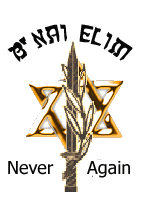














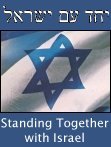


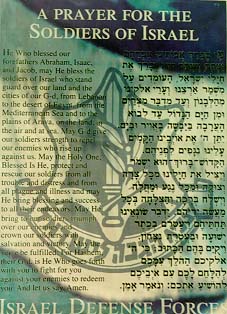
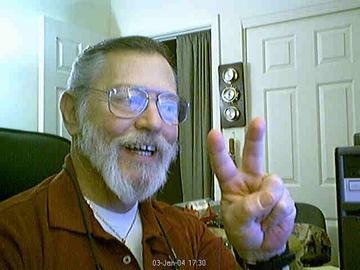


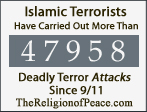


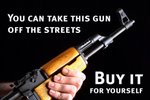
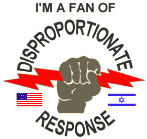
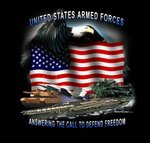


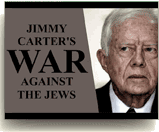
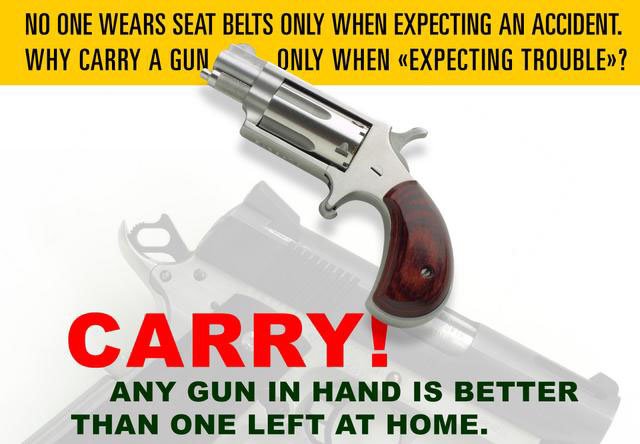
 While doing IDF (Israel Defence Forces) reserve duty on a mountain overlooking the
While doing IDF (Israel Defence Forces) reserve duty on a mountain overlooking the 

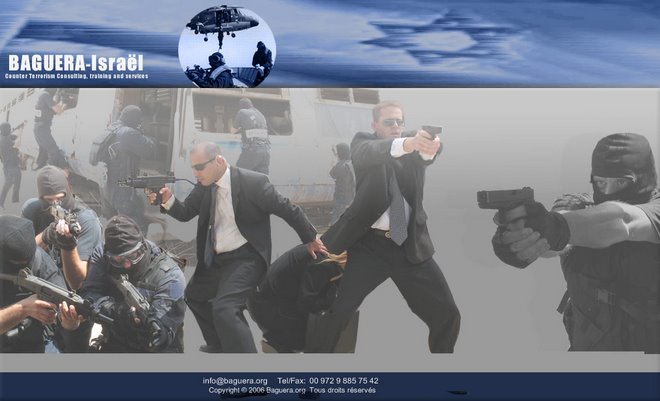



No comments:
Post a Comment